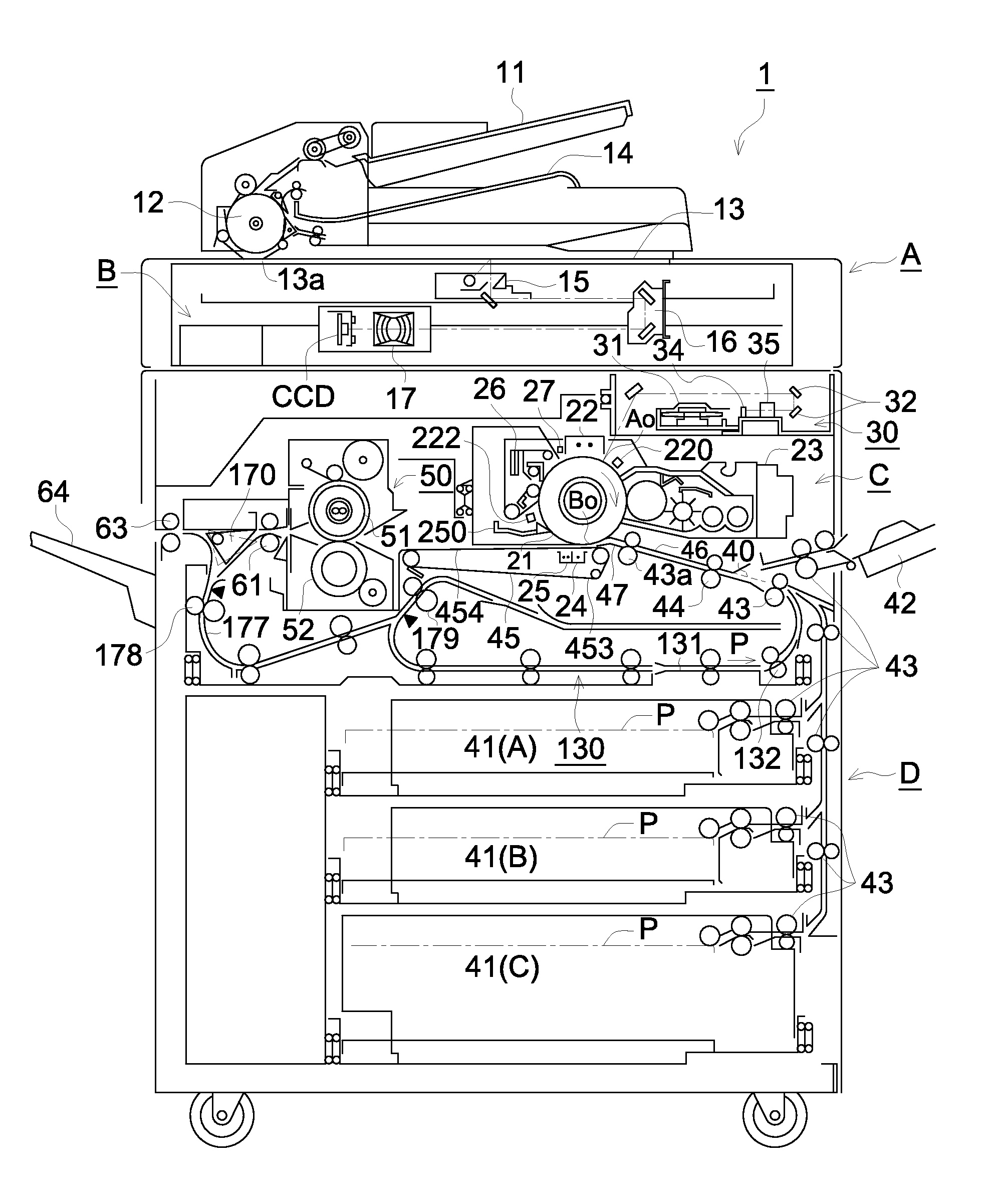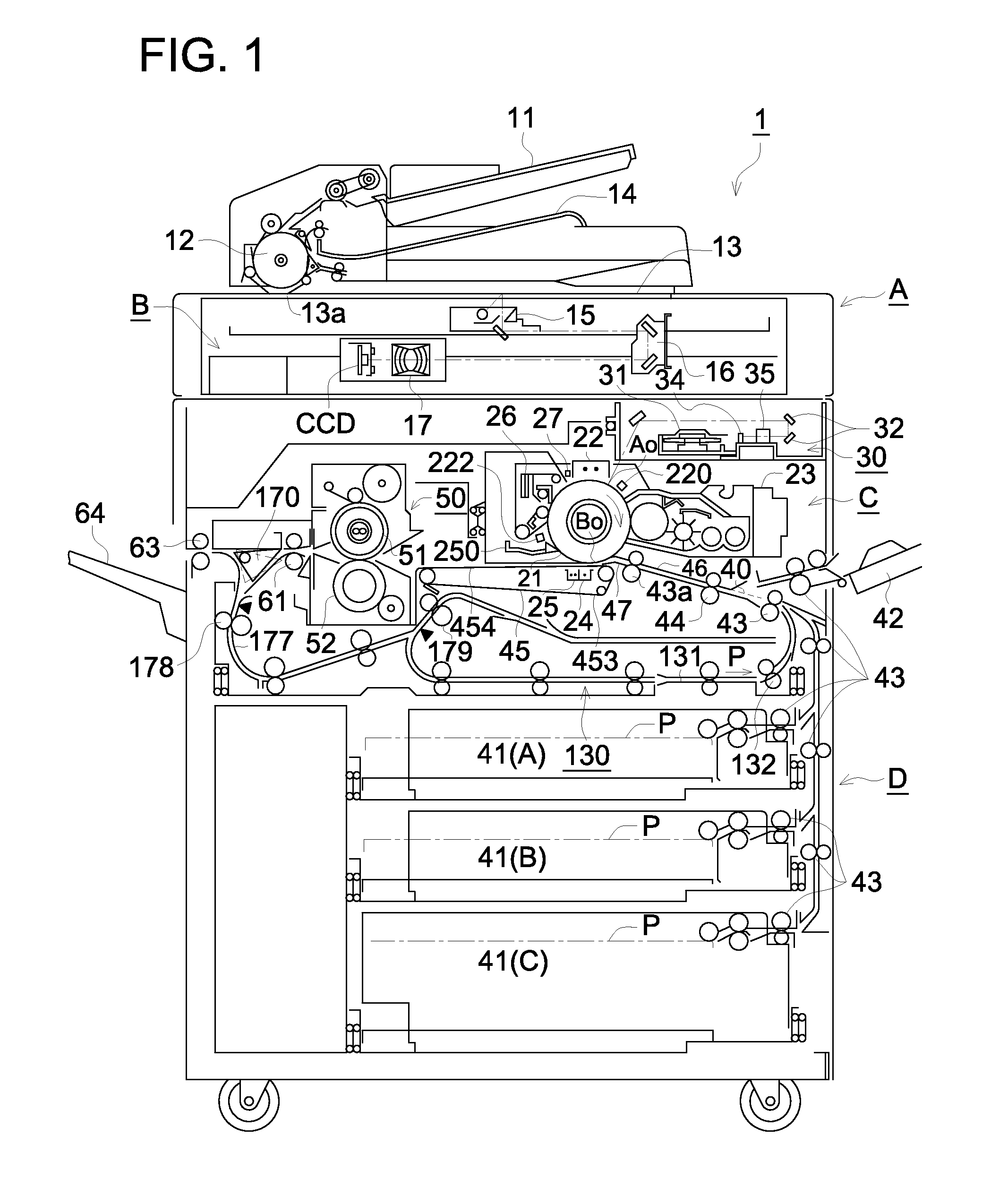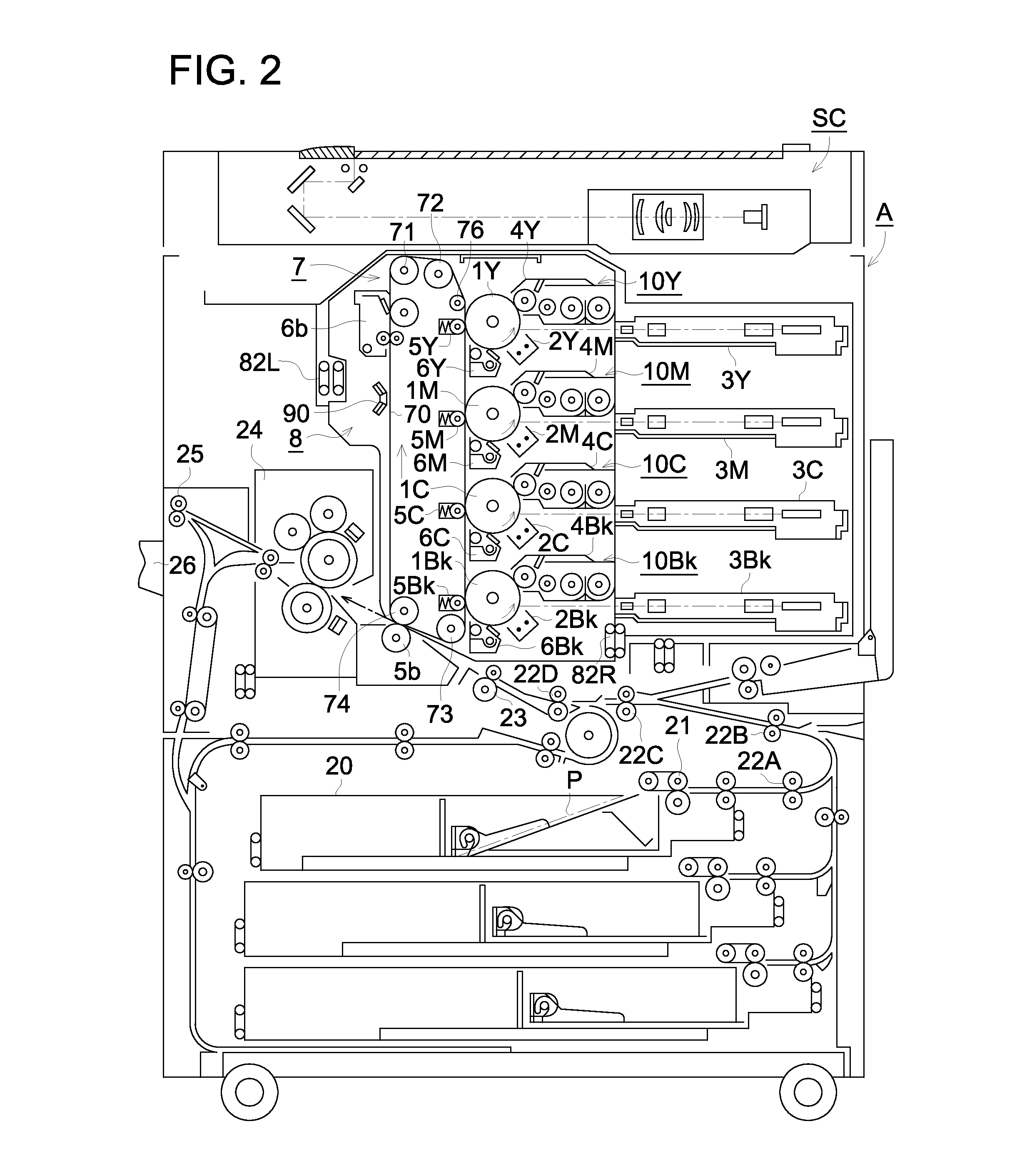Organic photoreceptor and manufacturing method thereof
a photoreceptor and organic technology, applied in the field of organic photoreceptors, can solve the problems of generating deterioration or damage on low manufacturing cost, weak mechanical strength, etc., and achieves the effects of improving the durability and wastage thickness improving the strength of the surface of the photoreceptor, and improving the durability
- Summary
- Abstract
- Description
- Claims
- Application Information
AI Technical Summary
Benefits of technology
Problems solved by technology
Method used
Image
Examples
examples
[0204]The invention is illustrated by means Examples. The term “parts” means parts by weight.
Photoreceptor 1
[0205]The photoreceptor 1 was produced as follows.
[0206]The cylinder type aluminum base support having machine surface was prepared, which surface has surface roughness Rz of 1.5 μm, having outer diameter of 80 mm and length of 362 mm.
[0207]Coating composition of the inter layer formulated as below was prepared.
[0208]
Polyamide resin X1010, manufactured 1 partby Daicel-Degussa Ltd.Γ-alumina SMT500SAS, manufactured 1.1 partsby TAYCA CORPORATIONEthanol20 parts
The composition was dispersed in batch process for ten hours employing a sand mill dispersion apparatus.
[0209]The coating composition was applied on to the support by dipping and thereafter drying at 110° C. for 20 minutes so as to obtain an interlayer having dry thickness of 2 μm.
[0210]The following components were mixed and dispersed by a sand mill for ten hours to prepare a coating composition for charge generation layer....
PUM
| Property | Measurement | Unit |
|---|---|---|
| particle diameter | aaaaa | aaaaa |
| thickness | aaaaa | aaaaa |
| thickness | aaaaa | aaaaa |
Abstract
Description
Claims
Application Information
 Login to View More
Login to View More - R&D
- Intellectual Property
- Life Sciences
- Materials
- Tech Scout
- Unparalleled Data Quality
- Higher Quality Content
- 60% Fewer Hallucinations
Browse by: Latest US Patents, China's latest patents, Technical Efficacy Thesaurus, Application Domain, Technology Topic, Popular Technical Reports.
© 2025 PatSnap. All rights reserved.Legal|Privacy policy|Modern Slavery Act Transparency Statement|Sitemap|About US| Contact US: help@patsnap.com



